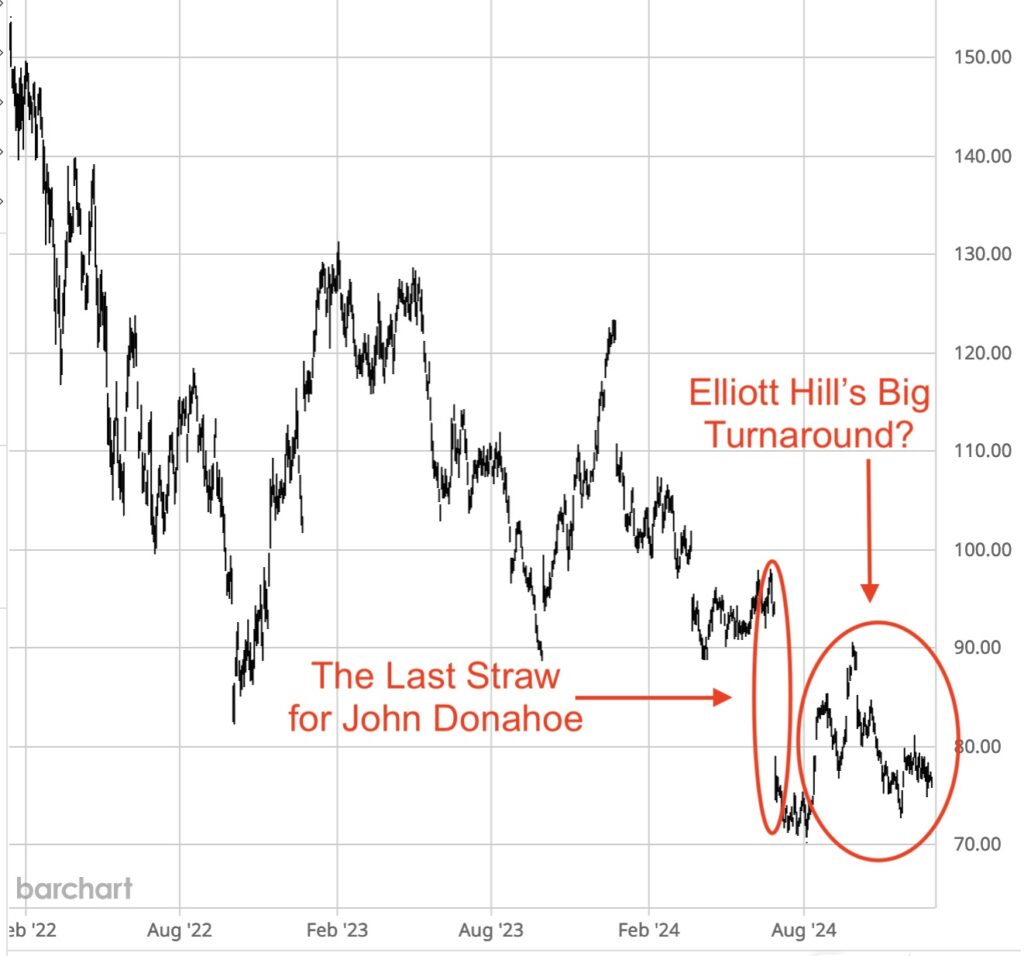Just Do It…
It’s the slogan that launched a giant.
With inspiring ads featuring the greatest athletes of the day — from Michael Jordan to Bo Jackson to Tiger Woods — they aligned their brand with greatness. And they made greatness accessible to anyone willing to put on a pair of their shoes and accept the challenge.
And after going public in 1980 for a modest $0.18 a share, the company grew to become a sportswear juggernaut, at one point commanding 48% of the athletic shoe market.
But over the past two years, while under the leadership of CEO John Donahoe, those fortunes have taken a turn for the worse. The company’s stock has lost over 50% of its value.
And now Nike seems to be taking its own advice.
Just Doing It
John Donahoe took the reins at Nike in January 2020. After overseeing the company’s post-pandemic bounce to its all-time high share price in 2021 — in large part due to Netflix’s 2020 documentary The Last Dance about Michael Jordan and the Chicago Bulls’ final championship season which reignited a massive demand for Air Jordans — the company consistently lost market share.
Until finally…
June 28, 2024 is a day many Nike employees and shareholders won’t soon forget. It’s when their stock value fell 21 per cent, making it the single worst trading day in the company’s history. This plunge came after Nike released their fiscal fourth quarter 2024 results a day earlier, where the brand announced Q4 revenues were down two per cent and they also expected fiscal Q1 2025 revenue to be down in the double digits at approximately 10 per cent.
Nike took its own advice and just did it.
The company sent Donahoe to the showers and brought in former Nike insider Elliott Hill.
It’s worth noting that Donahoe is only the second “outsider” to lead the company. His unfamiliarity with sneaker culture may have been a factor in the company’s struggles.
A 32-year, career employee with Nike, HIll retired as “president of its consumer and marketplace division where he was responsible for leading all commercial and marketing operations for Nike and the Jordan brand.”
Now with an insider back in charge, the company is hoping to be able to right the ship.
Nike’s Wild Ride (NKE 3-Year Chart)

In a year of high profile CEO moves — Pat Gelsinger out at Intel, Brian Niccol in at Starbucks — Nike has followed suit.
And the prospect for another CEO driven turnaround is in play…

